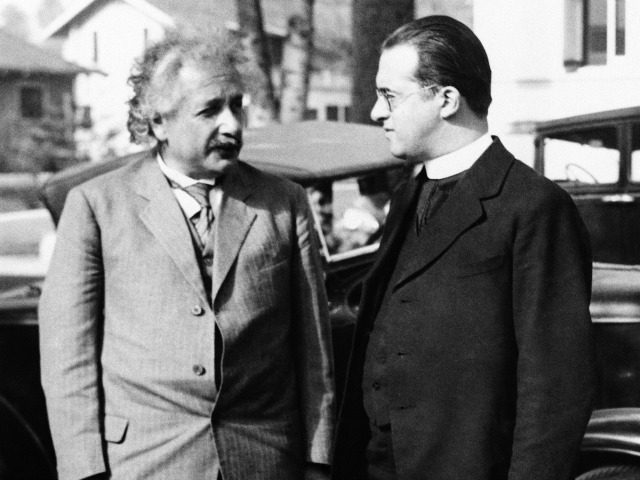The Vatican Observatory is holding a special astronomy workshop this week in honor of the formulator of the Big Bang theory of the origins of the universe, a Catholic priest by the name of Georges Lemaître.
The international workshop, titled “Black Holes, Gravitational Waves and Spacetime Singularities,” proposes to celebrate the legacy of Father Georges Lemaître (pictured above, right with Albert Einstein), the astronomer who first formulated the theory of the Big Bang (or the “primeval atom” as he called it) in 1927, noting that an expanding universe could be traced back in time to a single point of origin.
The event runs from Tuesday to Friday, and includes a series of presentations on phenomena ranging from supernovae to cosmic perturbations, as well as a special tribute to Father Lemaître and his contributions to astronomy.
Despite popular misconceptions of the Church as anti-science stemming from the infamous Galileo affair, the historical record suggests the opposite. As historian of science John L. Heilbron of the University of California-Berkeley has noted: “The Roman Catholic Church gave more financial aid and social support to the study of astronomy for over six centuries, from the recovery of ancient learning during the late Middle Ages into the Enlightenment, than any other, and, probably, all other, institutions.”
What can be said of astronomy can be said equally of medicine, physics, mathematics, and chemistry. Just as the Christian Church patronized the arts, so it vigorously supported scientific research. Some of history’s greatest scientists—Newton, Pasteur, Galilei, Lavoisier, Kepler, Copernicus, Faraday, Maxwell, Bernard, Mendel and Heisenberg, and many more—were all Christians, and several were clerics.
The Big Bang itself has sometimes been proposed as an alternative explanation to the Judeo-Christian notion of creation, but this dichotomy was foreign to the formulators of the theory, who saw faith and science as complementary and the Big Bang as fully compatible with an orthodox Christian understanding of the origins of the universe.
In his book God and the Astronomers, astrophysicist Robert Jastrow wrote that “the astronomical and biblical accounts of Genesis are the same; the chain of events leading to man commenced suddenly and sharply at a definite moment in time, in a flash of light and energy.”
And the Nobel Prize–winning scientist Arno Penzias, who co-discovered the cosmic microwave background radiation that lent strong support to the Big Bang, said: “The best data we have are exactly what I would have predicted, had I nothing to go on but the five books of Moses, the Psalms, the Bible as a whole.”
The Vatican Observatory is one of the oldest astronomical institutes in the world, tracing its origins back to Pope Gregory XIII who had the Tower of the Winds built in the Vatican in 1578. The Vatican re-established its astronomical “Observatory” 126 years ago, on March 14, 1891, and later moved the Observatory to Castel Gandolfo outside Rome.
Follow Thomas D. Williams on Twitter Follow @tdwilliamsrome

COMMENTS
Please let us know if you're having issues with commenting.